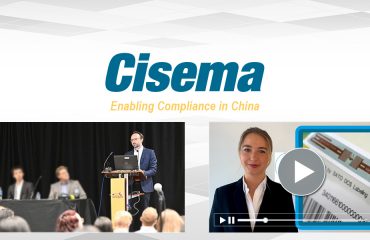China cosmetics stability evaluation guidelines and other 3 technical guidelines were released for public comment by the National Institute for Food and Drug Control (NIFDC) on April 10, 2024. This article highlights the key information of each technical guideline:
- Technical Guideline for Cosmetics Stability Evaluation
- Technical Guidelines for Cosmetics Preservative Challenge Tests
- Technical Guidelines for Evaluation of Compatibility between Cosmetics and Packaging Materials
- Technical Guidelines for the Application of Integrated Testing and Assessment Strategies for Skin Sensitization
Technical Guideline for Cosmetics Stability Evaluation
The draft guideline for the stability assessment of cosmetics outlines the experimental requirements, methods, and result evaluation for stability assessment.
Test Requirements
- Product samples used in impact factor tests and accelerated tests should be consistent with post-market products.
- Stability studies focus on factors affecting product quality during storage. Tests cover appearance, color, odor, pH, microbial content, and may include specialized tests like centrifugation and viscosity. Analytical methods are chosen based on product characteristics, with method validation for reliability.
- Testing frequency is determined by parameters, with comprehensive testing at the study’s start and end.
Test Methods
- Impact factor tests include high temperature, humidity, light exposure, and freeze-thaw.
- Accelerated tests simulate conditions over at least three months with multiple assessment time points.
- Long-term tests match the product’ best before date conditions for extended periods.
Test Evaluation
- Results are systematically analyzed against specified limits, with comprehensive evaluations considering product properties, formulation, processing, packaging, and production and distribution scenarios, culminating in a stability assessment report.
Technical Guidelines for Cosmetics Preservative Challenge Tests
The draft guidelines for challenge testing of preservatives in cosmetics outline methods for evaluating the efficacy of preservatives. These guidelines apply to common cosmetic formulations like emulsions and creams with water activity (AW≥0.7), specifying evaluation methods for hydrophilic creams, lotions, emulsions, and aqueous solutions. To ensure scientific rigor, the validation process encompasses various cosmetic products with different preservative systems and categories.
Six laboratories collaborated to validate the methods, ensuring reliability, repeatability, and accuracy of the data. Validation includes testing for total microbial count, mold, and yeast detection, neutralizer efficacy, and preservative efficacy of the test samples. This comprehensive approach aims to establish robust methods for evaluating preservative efficacy in cosmetics, addressing the need for standardized testing procedures to ensure product safety and quality.
Technical Guidelines for Evaluation of Compatibility between Cosmetics and Packaging Materials
The guidelines for evaluating compatibility between cosmetics and packaging materials specify requirements, test methods, and results evaluation for containers or carriers directly in contact with cosmetic contents. Packaging materials must be safe, ensuring no chemical reactions or harmful substance migration occurs.
Compatibility studies should commence during cosmetics development or packaging material selection and continue throughout the development process. Any adverse interactions between cosmetics and packaging should prompt investigation and appropriate actions, including changing materials or storage conditions.
Testing begins by identifying packaging containers and materials in contact with cosmetics, analyzing their composition, contact conditions, and production processes.
Extractive testing determines potential leachables, followed by interaction studies assessing migration into cosmetics under accelerated and long-term stability conditions. Safety assessments should determine if materials are suitable for cosmetics.
The results are evaluated by analyzing extractables and leachables, ensuring compliance with safety standards or conducting risk assessments for unregulated substances.
Stability test results may complement compatibility assessments. The evaluation focuses on potential impacts on cosmetics’ quality and safety. For novel or high-risk packaging materials, comprehensive assessments, including biocompatibility, are necessary based on interaction studies.
Technical Guidelines for the Application of Integrated Testing and Assessment Strategies for Skin Sensitization
Allergic Contact Dermatitis (ACD) is an immune-mediated skin reaction to a substance, commonly assessed through skin sensitization testing to evaluate the sensitizing potential of cosmetic ingredients. This guideline applies to the evaluation of skin sensitization potential in cosmetic ingredients. It employs a “3 out of 2 tests” strategy, comprising toxicological tests for key events (KE1-KE3) within the skin sensitization adverse outcome pathway (AOP), subject to the applicability of selected test methods.
The approach integrates the characteristics of cosmetic ingredients and the mechanistic understanding of skin sensitization AOP, establishing a systematic testing strategy to sequentially gather and assess data. Results guide subsequent testing, facilitating hazard identification of cosmetic ingredient skin sensitization potential. Alternatives to traditional methods are available, including:
- Local Lymph Node Assay (LLNA:DA and LLNA:BrdU-ELISA) for skin sensitization
- Direct Peptide Reactivity Assay (DPRA)
- Amino Acid Derivative Reactivity Assay (ADRA)
- Human Cell Line Activation Test (h-CLAT)
- U937 Cell Activation Test (U-SENS)
- KeratinoSens™ assay (LuSens).
These methods offer alternatives while ensuring the safety and regulatory compliance of cosmetic products.
How to submit comments:
If you have any suggestions, comments or improvements, please send the feedback table and relevant materials to hzpbwh@nifdc.org.cn before April 17, 2024.
Further information
Read the original NIFDC announcement on China cosmetics stability evaluation and other technical guidelines.
Read our previous article on China’s cosmetic safety technical specifications – 21 revision items issued.
Discover our services for cosmetics and raw material manufacturers.
GET IN TOUCH

 Deutsch
Deutsch  Italiano
Italiano  Français
Français  日本語
日本語  한국어
한국어 



